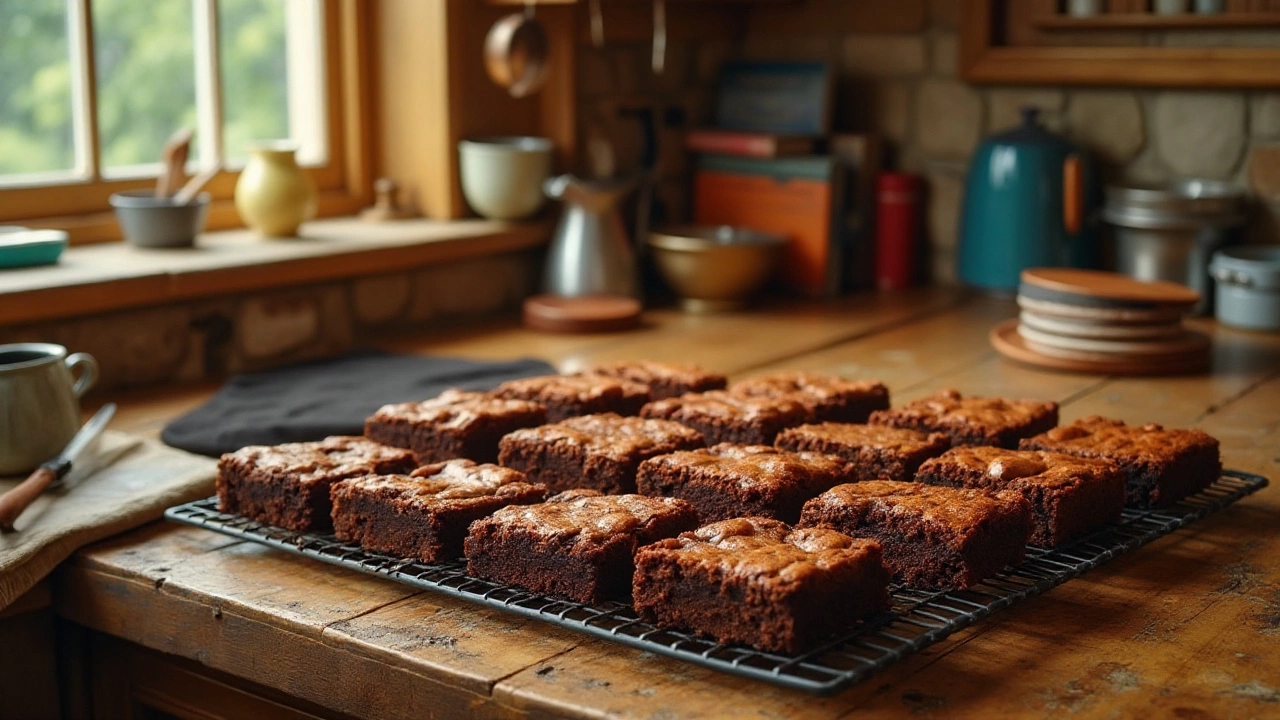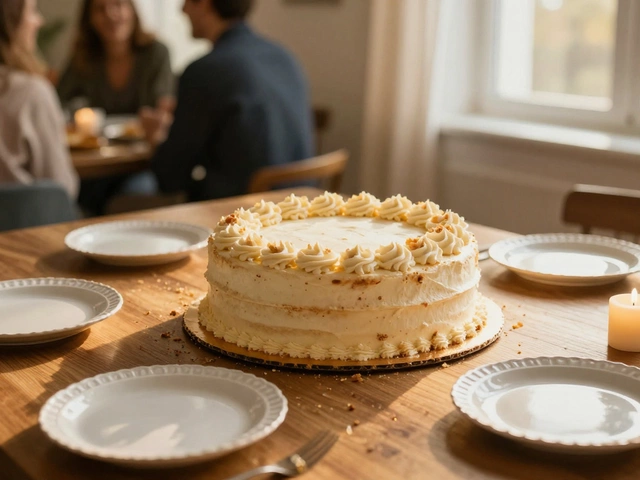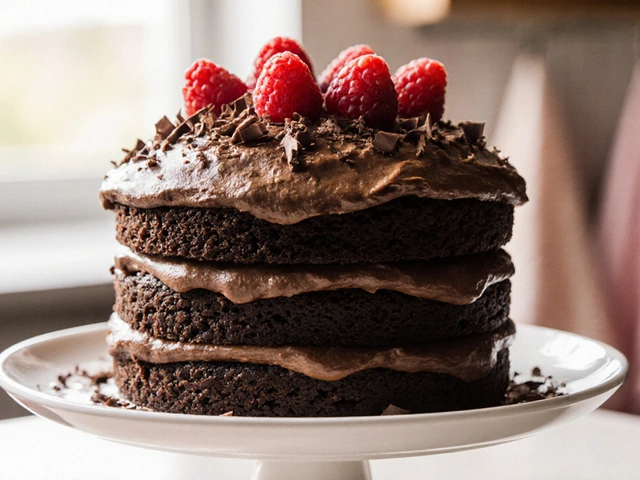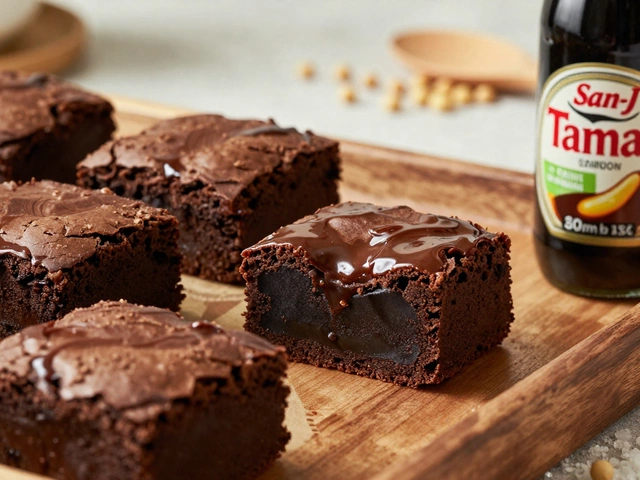Baking brownies might seem straightforward, but ensuring they stay moist and tender requires a bit of know-how. The right balance of ingredients and careful baking can make all the difference. But what happens when they're sitting on the counter the next day? That indulgent texture doesn't have to be a fleeting experience.
Fortunately, there are tried-and-true techniques to preserve the freshness and soft texture of your brownies. From choosing specific types of sugar to tweaking baking temperatures, small adjustments can yield big rewards. Whether you’re baking for a family gathering or just a personal treat, these tips will help you enjoy that just-baked perfection a little longer.
- Selecting the Right Ingredients
- Baking at the Perfect Temperature
- Proper Storage Techniques
- Reviving Day-Old Brownies
Selecting the Right Ingredients
When it comes to crafting the perfect brownies, starting with the right ingredients sets the foundation for success. The essential components of a traditional brownie recipe typically include sugar, butter, eggs, flour, and of course, chocolate. Each plays a pivotal role, not only in flavor but in texture, which is crucial for keeping your moist brownies just as delectable days after baking.
Chocolate is arguably the star of the brownie. Opting for a high-quality cocoa powder and real chocolate rather than chocolate chips can make a significant difference. Real chocolate offers a richness that is hard to match, and cocoa powder brings out a deeper flavor profile that sets the base. Many bakers also swear by using a mix of both, as this combination can enhance the depth and complexity of the brownie, ensuring it remains rich and aromatic.
"The secret to a fudgy brownie starts with great chocolate. It builds a flavor so deep you'll savor each bite," asserts renowned pastry chef Dominique Ansel.
Butter and its consistency can greatly affect your soft brownies. Melted butter, when used in the right amount, offers a fudgy texture that is higher in moisture compared to other techniques. Meanwhile, for those looking for alternatives, coconut oil can lend a slightly tropical twist, which also helps trap moisture. Subtle tweaks like these adapt recipes to your taste while still keeping the brownie moist and chewy. Sugar is another crucial player in achieving the perfect texture. Using a blend of granulated and brown sugar can do wonders. Brown sugar's molasses content contributes a chewy softness and adds a slight caramel undertone that complements the chocolate beautifully. Some bakers prefer replacing a small portion of flour with cornstarch or even using cake flour instead of all-purpose flour, as these bring a lighter and softer crumb.
The choice of eggs is not to be overlooked. Eggs serve to emulsify and hold all those ingredients together, while also contributing to the moisture level. Generally, adding one extra egg yolk in particular can introduce additional richness and a softer center. This additional yolk helps bind ingredients without drying the batter out, which contrasts with the function of the egg white. In fact, adjusting this ratio of yolk to white is key for that perfect texture.
Finally, flavor enhancements such as vanilla extract and a pinch of salt can elevate your brownies, making them not only moist but deeply flavored. Vanilla brings warmth, while salt accentuates sweetness, and together they balance the rich chocolate flavor, creating an irresistible, mouth-watering dessert. With the right blend of these ingredients, your brownies will stay moist and tempting long after they're taken out of the oven.
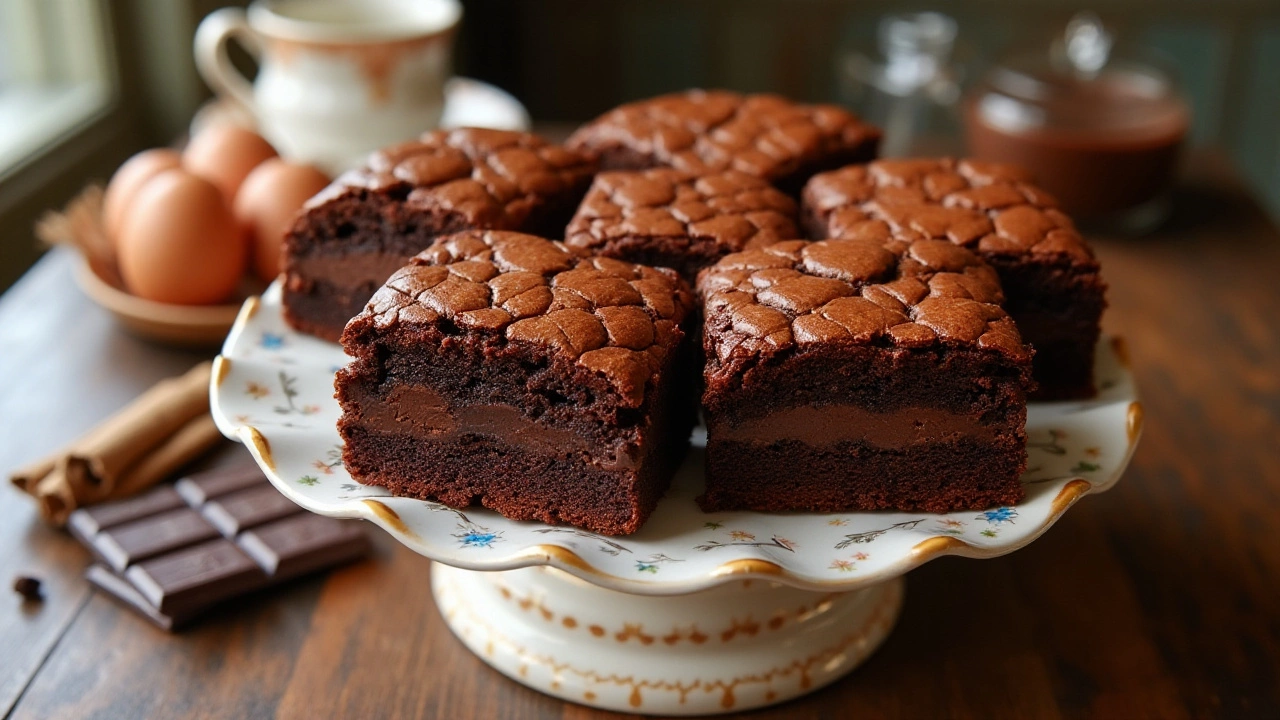
Baking at the Perfect Temperature
The magic behind irresistibly moist brownies often lies in the oven and its heat. Many bakers underestimate how critical temperature control is when aiming for that perfect, soft texture. Getting it right ensures that your concoction turns out gooey, not dry. Start by preheating your oven, as having a consistent heat application is fundamental. Variations in temperature can affect cooking times and overall results, requiring attention to maintain the fudginess everyone loves.
Baking brownies at around 325°F (163°C) can be optimal, especially if you're looking for them to have a luscious, moist crumb. A slower bake gives the batter enough time to set perfectly without drying out. Ovens can be unpredictable, with some running hotter or cooler than their settings. Investing in an oven thermometer could be a valuable addition to your baking toolkit, ensuring precision. Experimenting within a small temperature range helps you discover what works best for your specific oven conditions.
Understanding the Science
The science behind this involves the interaction of sugars and fats, which contribute to the delectable chewy texture. Sugar helps caramelization, while fats keep that indulgent moisture intact. baking at too high a temperature can result in the edges of your brownies cooking faster, causing dryness. Conversely, too low a temperature might lead to an uneven bake. Striking the right balance is crucial, ensuring the center cooks thoroughly without the edges becoming overdone.If you frequently bake, you might have noticed variations even with the same recipe. This can often be traced back to temperature fluctuations. Heading that off early can save your brownies from being too cake-like. As renowned pastry chef Maida Heatter advised,
"A good dessert has to reach the right texture and taste, and sometimes, even a minor temperature adjustment makes all the difference."This couldn’t be truer for those aiming for impeccable brownies.
Adapting for Different Brownie Types
Whether you're aiming for a thick, dense brownie or a lighter, more cakey version, temperature plays a defining role. Higher oven racks can be used if a crusty top is your goal. For those who like their brownies strictly moist and soft, placing the tray in the middle ensures even distribution of heat.- Always check brownies a few minutes before the recommended bake time; this helps avoid over-baking.
- Use visual cues like a shiny crust and slight pulling away from the pan's edges.
- Applying the toothpick test can indicate readiness—look for a few moist crumbs clinging to it, not wet batter.
By adjusting these factors, you can master the art of baking brownies that stay delectable for longer, a treat you're sure to enjoy each and every time.
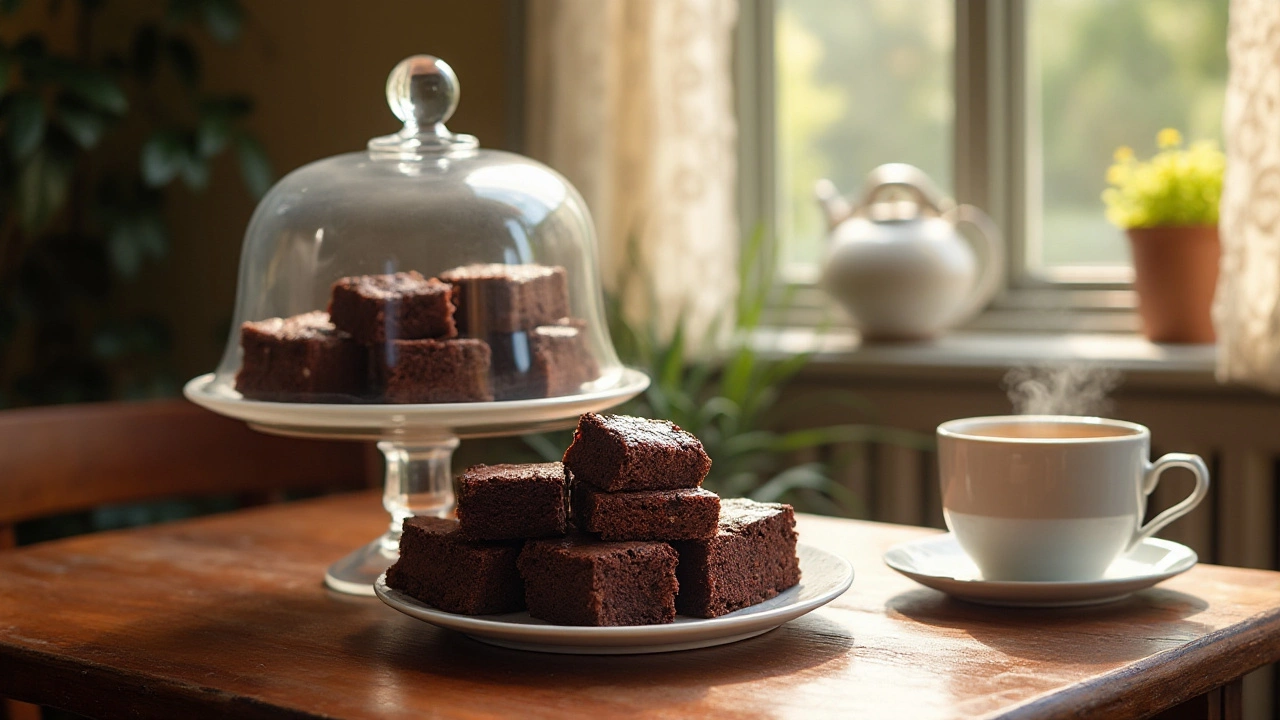
Proper Storage Techniques
When it comes to keeping your moist brownies fresh, storage is a crucial factor that many bakers tend to overlook. A brownie is at its best when it’s as soft and chewy on the third day as it was fresh from the oven. To achieve this delightful consistency, it’s essential to understand how moisture and air exposure affect the texture of baked goods. One of the primary things to focus on is minimizing air contact to prevent drying out. Using an airtight container is the most straightforward approach. Before placing your brownies into the container, ensure that they are at room temperature, as storing warm brownies can lead to condensation, which will affect their texture negatively. It might seem intuitive to refrigerate them, but a succinct study on baked goods shows that refrigeration often accelerates the drying process unless you’re dealing with cream-filled pastries.
For those bakers who like to cut their soft brownies immediately, bear in mind that exposing more surface area quickens the drying process. Keeping them in a single block can actually preserve moisture better. If slicing is a must, then wrap each piece individually in plastic wrap to seal in the moisture before placing them in the container. Some bakers recommend adding a slice of bread or an apple wedge to the container. This practice is built on the principle that these additives will give off moisture, and the brownies will absorb it, albeit slowly. This trick, with origins in old bakeries, can extend the softness of your favorite treat without altering the flavor.
According to renowned pastry chef Dominique Ansel, "The secret to good brownies is the simplicity and care in every step, including how we store them. Keeping them shielded from air is just as important as baking them right."
If you choose to freeze them for longer storage, make sure to wrap them tightly in plastic wrap and then foil. Freezing can preserve that desired chewiness when done properly, offering you sweet indulgence whenever you need it. To enjoy them later, simply thaw the brownies at room temperature or warm them in the microwave for a few seconds to regain that just-baked sensation. An interesting data point from home bakers highlights that up to 70% of moisture is retained in brownies that are properly wrapped before freezing, compared to 30% with normal room temperature storage after a week.
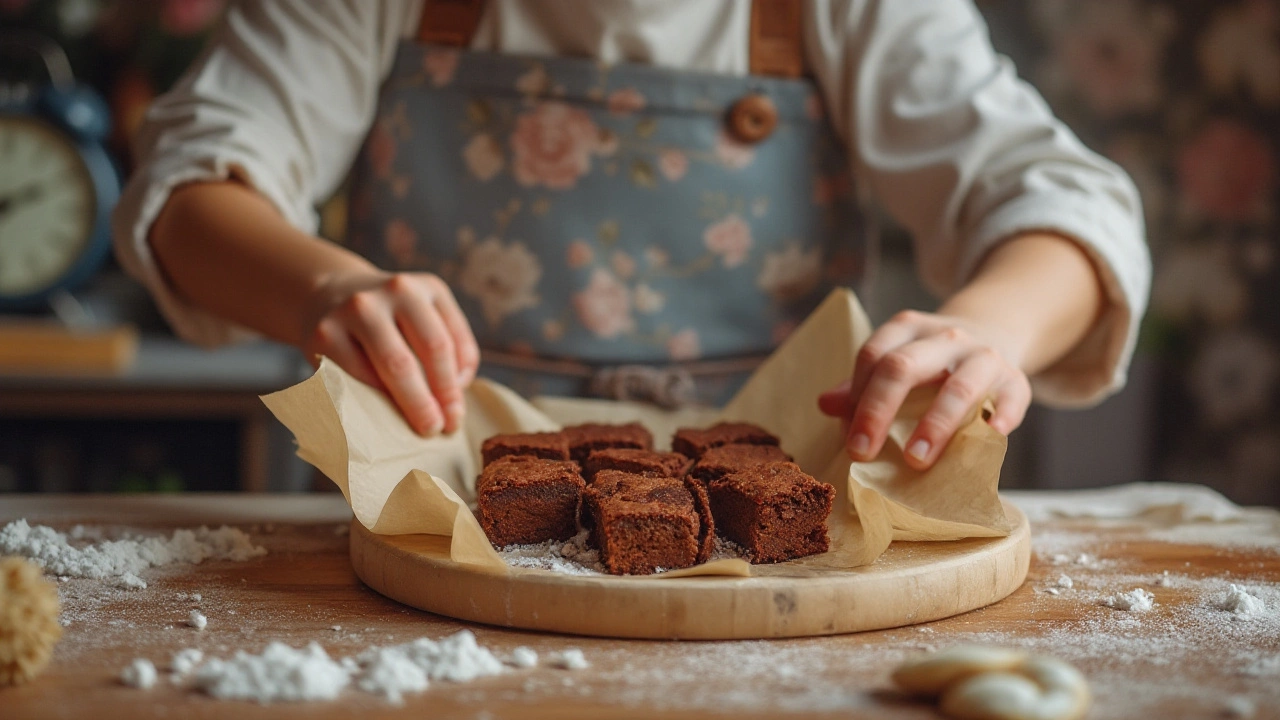
Reviving Day-Old Brownies
The thought of a dry, crumbly brownie is enough to make anyone cringe, but with a little bit of creativity, you can breathe new life into those seemingly past-their-prime confections. Let's dive into some practical methods to restore your brownies to their original soft and moist glory. One of the simplest tricks to revive your sweet creations is to use a heat source. A conventional oven preheated to 300°F (about 150°C) can do wonders. Wrap the brownies in aluminum foil to ensure they warm evenly and retain their moisture. Set them on a baking sheet and place in the oven for about 5 to 10 minutes—a quick warm-up that's often enough to rejuvenate their soft centers.
An alternative to the oven is the microwave, which works if you’re in a pinch or just craving a fast solution. Place an individual piece of brownie on a microwave-safe plate, cover it with a damp paper towel to lock in moisture, and heat it for 10 to 15 seconds. Be cautious not to overdo it, as microwaving for too long can lead to drying out. While these tips are practical, here’s a little-known secret shared by baking expert Sarah Kieffer:
“Adding a touch of syrup or honey over your brownies before reheating can help to enhance their moist texture and create a delicate glaze.”This trick not only restores moisture but elevates the flavor as well.
Beyond heat, consider adding complementary flavors or textures. Serving the rejuvenated brownies with a scoop of ice cream, a dollop of whipped cream, or drizzling them with chocolate sauce can transform the eating experience entirely. If you're open to experimenting, adding a smear of nut butter or some fresh berries on the side pairs beautifully with the rich chocolate of the brownies. These additions are not just about aesthetics; they provide contrasting textures that enhance the enjoyment of each bite.
For those who prefer a more unconventional approach, incorporating day-old brownies into other desserts can be delightfully innovative. Consider breaking them into chunks and mixing into vanilla yogurt or folding them into a cake batter for a surprise layer. If you’re feeling ambitious, you could even craft a trifle by layering brownie pieces with cream and fruit. This approach not only revives the brownies but also showcases your culinary creativity, taking a simple dessert to a whole new level of gourmet experience.
Lastly, it’s essential to consider storage to prevent their drying out in the first place. Keeping brownies in an airtight container at room temperature is optimal, as this environment maintains their texture for several days. Refrigeration, while possible, can sometimes accelerate drying due to the cold, dry air circulating in the fridge. If you need to store them longer, freezing is an excellent option—just ensure they are well-wrapped to minimize exposure to air. Then, when you’re ready, thaw them at room temperature, and they will be nearly as good as freshly baked.

